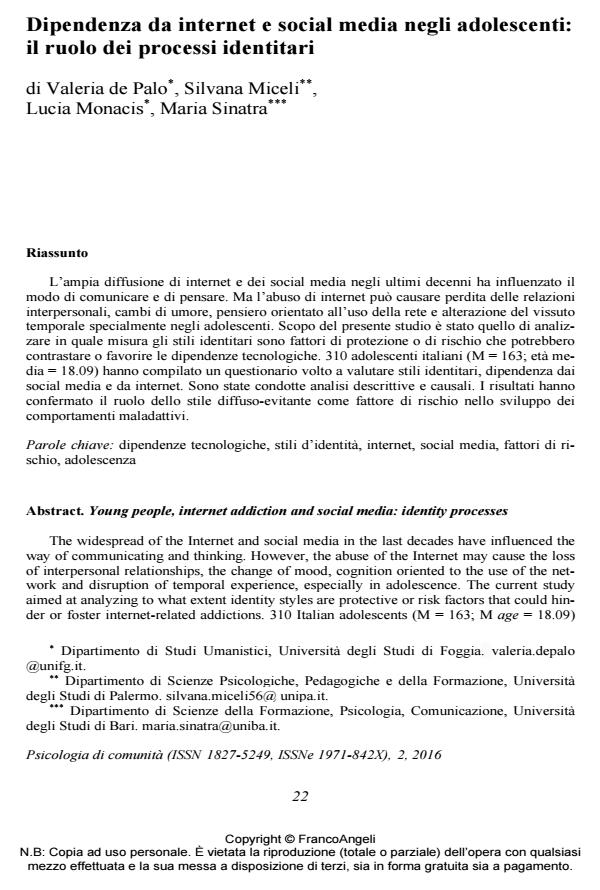Young people, internet addiction and social media: identity processes
Journal title PSICOLOGIA DI COMUNITA’
Author/s Valeria de Paolo, Silvana Miceli, Lucia Monacis, Maria Sinatra
Publishing Year 2017 Issue 2016/2
Language Italian Pages 10 P. 22-31 File size 148 KB
DOI 10.3280/PSC2016-002003
DOI is like a bar code for intellectual property: to have more infomation
click here
Below, you can see the article first page
If you want to buy this article in PDF format, you can do it, following the instructions to buy download credits

FrancoAngeli is member of Publishers International Linking Association, Inc (PILA), a not-for-profit association which run the CrossRef service enabling links to and from online scholarly content.
The widespread of the Internet and social media in the last decades have influenced the way of communicating and thinking. However, the abuse of the Internet may cause the loss of interpersonal relationships, the change of mood, cognition oriented to the use of the network and disruption of temporal experience, especially in adolescence. The current study aimed at analyzing to what extent identity styles are protective or risk factors that could hinder or foster internet-related addictions. 310 Italian adolescents (M = 163; M age = 18.09) filled out a questionnaire assessing identity styles, social media addiction, and Internet addiction. Descriptive and causal analyses were performed. Results confirmed the role of the diffuse-avoidant style as a risk factor in the development of maladaptive behaviours.
Keywords: Technological addictions, identity styles, Internet, social media, risk factors, adolescence
Jel codes: I12
Valeria de Paolo, Silvana Miceli, Lucia Monacis, Maria Sinatra, Dipendenza da internet e social media negli adolescenti: il ruolo dei processi identitari in "PSICOLOGIA DI COMUNITA’" 2/2016, pp 22-31, DOI: 10.3280/PSC2016-002003